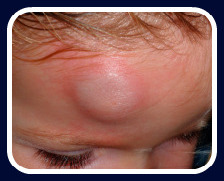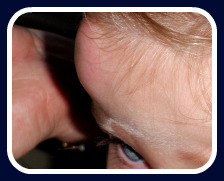Internal Bleeding
First Aid Management
Internal Bleeding occurs when there is a rupture of either an artery, vein or capillaries within the body. Sometimes the bleeding is visible and other times not.
 |
 |
Concealed Bleeding is more difficult to recognise than visible bleeding therefore if you are unsure it is better to treat the person as if they are losing blood internally. It does no harm to the casualty, to be managed this way but it could be life threatening if treatment is not initiated.
Remember to look at the important observations that may indicate internal blood loss and a shock response, which include:
- Skin appearance
- Conscious state
- Pulse
- Respiration
Also visible bleeding
For more signs and symptoms to confirm internal blood loss see Internal Bleeding - Recognition.
If you are unsure, assume the worst and treat for internal bleeding. Unfortunately, the untrained medical person can not stop internal blood loss. However, the aim of management is to try and assist in slowing down the loss of blood so the chance of survival is increased.
Management
- Call or get someone to call emergency services. Don’t wait to see if the person improves or deteriorates.
- If available put synthetic gloves on as bleeding may become apparent.
- Check airway, breathing and circulation. Begin cardiopulmonary resuscitation (CPR) if necessary. If you want to understand CPR in more depth then go to CPR- Q's & A's.
- If unconscious and breathing – place the person in the recovery position and with legs higher than the heart if possible. Injuries permitting.
- If conscious – lie the casualty down and raise or bend legs if injuries permit.
- Keep casualty warm. This may help delay the onset of shock by minimising the bodies heat loss.
- Reassure and stay calm. This helps provide security for the injured person.
- Continue to check pulse and breathing.
- Treat other injuries as appropriate.
- Do not give anything to eat or drink as they may require surgery to stop the bleeding.
NOTE: If surgery is needed it is best that the person not consumed anything for minimum of 6 hours prior to having anaesthetic. The reason for this is if the stomach has contents in it they can exit the stomach and be inhaled into the lungs or remain in the throat and cause difficulty breathing during the operation. Neither the patient nor the medical staff need this complication during surgery.
If you need to find out about First Aid for External Bleeding go to External Bleeding Page.
OR
Learn more about CPR with CPR Questions & Answers.
Are you needing to put together a First Aid Kit. Here is our comprehensive First Aid Kit Checklists.
You may be interested in learning about:
First Aid for Cuts and Scrapes
Photo courtesy of Paula Gillan